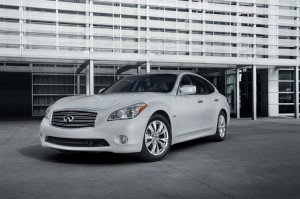Few automakers are more intent on partnering with the competition than Nissan, which is stepping up its cooperative alliance with erstwhile rival Mitsubishi just two weeks after confirming plans to significantly increase its ties to Germany’s Daimler AG.
Nissan and Mitsubishi first agreed to help fill holes in each others’ product line-up in December 2010. They will now expand the number of vehicles covered by that deal, they confirm. Among other things, Nissan will get a new battery-powered commercial vehicle, while Mitsubishi will get a replacement for its flagship passenger car, the Diamante.
The expanded alliance focuses on the two makers’ home market, a jointly-issued statement declaring, “These initiatives are intended to strengthen the competitiveness of both companies in Japan.”
It is unclear whether any of the products developed under the partnership will be marketed outside Japan.
Both Nissan and Mitsubishi are familiar with the idea of automotive alliances. The latter maker has had a series of deals, in recent decades, with manufacturers as diverse as Chrysler, Hyundai and what was then known as DaimlerChrysler.
Nissan, meanwhile, was able to reverse its flagging fortunes when, in 1999, it entered into a Euro-Asian alliance with France’s Renault. Considered one of the most successful partnerships in automotive history, the two brands cooperate closely on a variety of products and are both run by Brazilian-born CEO Carlos Ghosn.
Nissan has established other, less extensive alliances, notably with Germany’s Daimler, parent company to Mercedes-Benz and Smart. At the Frankfurt Motor Show, earlier this month, Ghosn and his Daimler counterpart, Carlos Ghosn, announced they would step up that partnership. Among other things, Mercedes will now provide its compact luxury car platform to serve as a foundation for a production version of the Etherea, a luxury concept develop by Nissan’s high-line Infiniti brand. (For the full story, Click Here.)
As part of its deal with Mitsubishi, Nissan will begin providing a version of the Fuga luxury sedan to the Japanese rival next summer. Known to Americans as the Infiniti M, the Mitsubishi version will be badged the Diamante, replacing the maker’s old flagship sedan.
Mitsubishi President Osamu Masuko indicated his company’s designers will sculpt the Diamante to help differentiate it from the Fuga/M.
Meanwhile, Nissan will get a version of the Minicab-MiEV commercial electric car. Nissan and partner Renault have been looking to become major players in the global battery-car market, Nissan already producing the Leaf and looking to introduce several additional products, including a battery-electric Infiniti.
Initially, at least, the new models will be aimed at the Japanese home market. But Nissan and Mitsubishi are also working to jointly develop new minicars that could be sold in other markets abroad.
According to Nissan CEO Ghosn, the alliance strategy allows his company to develop more products with less resources and ultimately results in improved economies of scale.
Skeptics, however, warn that it can be difficult to get two otherwise competing manufacturers to agree on key issues, such as the size and shape of a new product. That, they warn, can lead to compromises that reduce a product’s competitiveness. That is one reason, critics point out, why the Chrysler Sebring, developed as a joint effort of Chrysler and Mitsubishi, failed to deliver on initial expectations.

